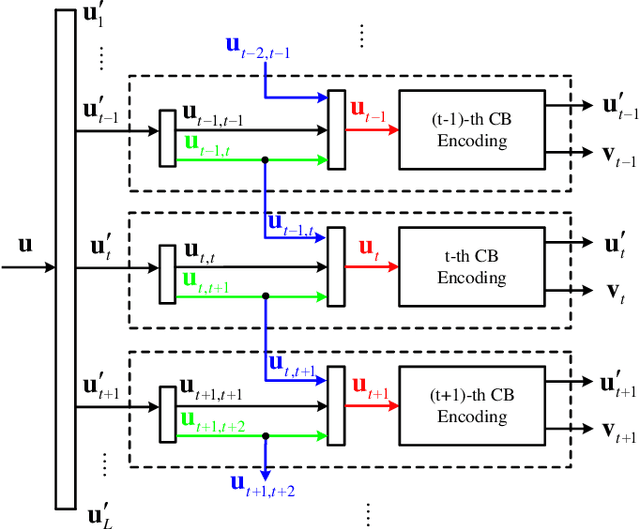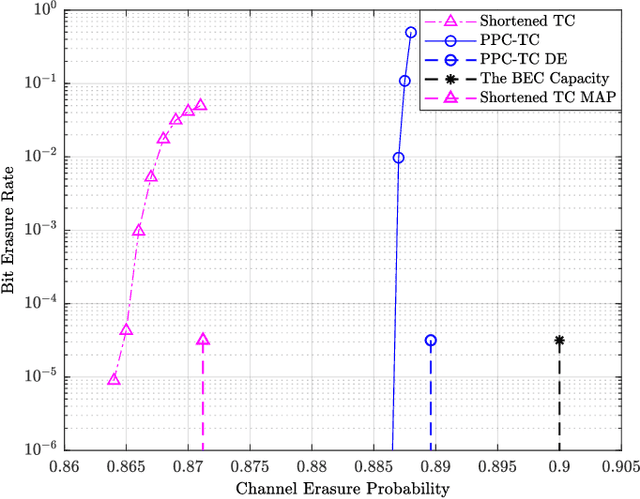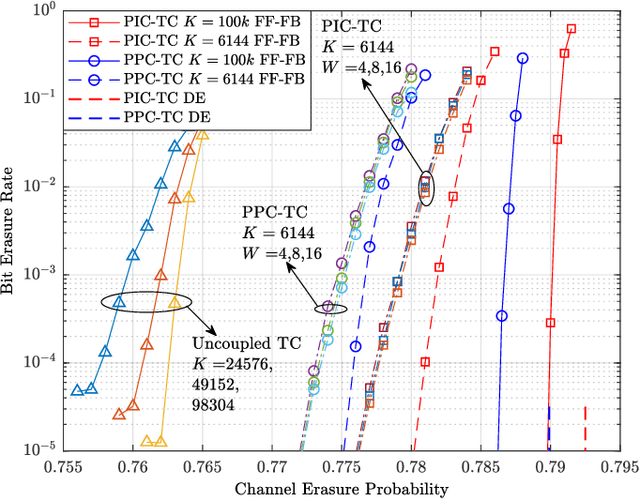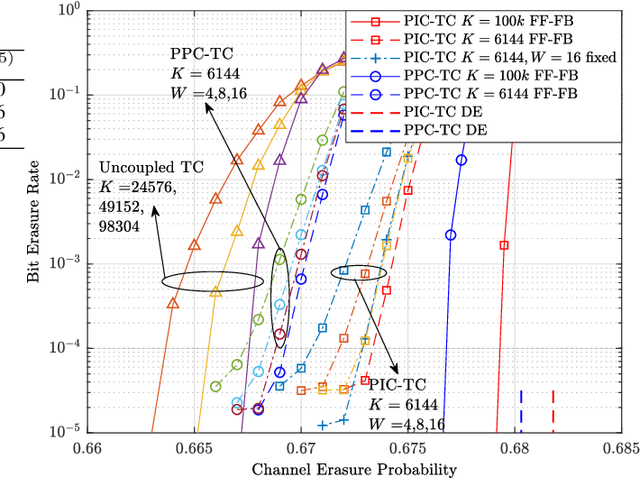Analysis and Design of Partially Information- and Partially Parity-Coupled Turbo Codes
Paper and Code
Dec 24, 2020



In this paper, we study a class of spatially coupled turbo codes, namely partially information- and partially parity-coupled turbo codes. This class of codes enjoy several advantages such as flexible code rate adjustment by varying the coupling ratio and the encoding and decoding architectures of the underlying component codes can remain unchanged. For this work, we first provide the construction methods for partially coupled turbo codes with coupling memory $m$ and study the corresponding graph models. We then derive the density evolution equations for the corresponding ensembles on the binary erasure channel to precisely compute their iterative decoding thresholds. Rate-compatible designs and their decoding thresholds are also provided, where the coupling and puncturing ratios are jointly optimized to achieve the largest decoding threshold for a given target code rate. Our results show that for a wide range of code rates, the proposed codes attain close-to-capacity performance and the decoding performance improves with increasing the coupling memory. In particular, the proposed partially parity-coupled turbo codes have thresholds within 0.0002 of the BEC capacity for rates ranging from $1/3$ to $9/10$, yielding an attractive way for constructing rate-compatible capacity-approaching channel codes.
 Add to Chrome
Add to Chrome Add to Firefox
Add to Firefox Add to Edge
Add to Edge